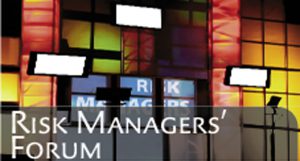CRIME INSURANCE COVERAGE: THE FOUR “P” STRATEGY
An approach to covering the critical elements
of any crime exposure
Almost every kind of business is susceptible to crime exposures.
Despite that, most agents don’t give it much thought … .
By Paul Martin
Almost every kind of business is susceptible to crime exposures. Despite that, most agents don’t give it much thought, maybe because agents don’t have a useful framework for considering crime exposures. This column provides a simple way of remembering what needs to be examined with clients when discussing the possible need for crime coverage. The Four “P” Strategy helps you cover the critical elements of any crime exposure: People, Perils, Property, and Protection.
People. The first question when considering crime exposures is who is the threat? The two big answers are: employees, and everyone else. For example, if employee theft is a threat, and it often is, then Employee Theft coverage is important. Several publications by ex-law enforcement officers who have studied insider theft point out that smaller organizations are much easier to embezzle from than larger ones. Employee theft is an exposure for everyone.
It’s worth noting that the only way to get protection against theft by employees is to purchase employee theft coverage; in fact, all other crime coverages specifically exclude theft by employees and other insiders. In the ISO Crime Coverage Form, there is a very generous definition of who qualifies as an employee. It includes regular employees, officers, temporary and seasonal employees, in most cases, and leased employees.
But there is one huge hole in the definition related to independent contractors—the definition of “employee” in the coverage form specifically excludes them. This can be problematic, because more and more businesses today have connections to gig workers to whom they send 1099s to at year’s end.
Let’s look at a real-world scenario involving forgery and embezzlement. Many years ago, a producer reached out to talk about a client’s significant crime loss. In this situation, an independent contractor salesperson had used a series of forged internal documents that tricked the accounting department into sending him hundreds of thousands of dollars in sales commissions over many years. As the details of the loss were uncovered, it became clear that the loss wasn’t covered.
The insured had purchased Employee Theft and Forgery coverages with large limits. This series of thefts fits neither of those. First, the salesperson wasn’t an employee. Second, the loss didn’t fit the definition of forgery because the internal form used to trick accounts payable wasn’t a check, draft, or similar instrument described in the coverage insuring agreement.
When the producer realized that Employee Theft coverage would not respond to the loss because it lacked a simple, probably negligible cost endorsement, he was crushed. His customer bought the coverage but didn’t get to benefit from it and suffered a huge loss.
What could have been done? This kind of loss could have been corrected with an endorsement—Include Designated Persons Or Classes Of Persons As Employees (CR 25 41). This is one of many situational endorsements that bring specific groups of people under the definition of employee, thus providing coverage for thefts they commit. This doesn’t mean that every single employee will need to be covered. Employee Theft coverage allows enough flexibility to cover the insiders that the insured is most concerned about. Of course, outsiders can represent a threat as well, and that takes us to the next “P”—Perils.
Perils. How are people going to steal from the insured? The different ways people can steal from each other are vast. Here are just a few:
- Burglary
- Robbery
- Forgery
- Larceny (simple theft of personal property)
- Cyber theft
- Safe cracking
- Counterfeit currency
- Kidnap and ransom
The coverage form provides coverage options that address some of these perils directly, while other perils may need an endorsement. There are crime insuring agreements inside the forms for:
- Forgery
- Theft of Money and Securities
- Robbery or Safe Burglary of Other Property
- Theft Outside the Premises
- Computer and Funds Transfer Fraud
- Money Orders and Counterfeit Money
In addition to these, there are endorsements that can provide coverage for Fraudulent Impersonation, Extortion, Destruction of Electronic Data by Employees, and Identity Fraud Expense.
Property. What types of property are insureds worried about? The dividing line is between money and securities and other types of property. There are some distinctions that may apply in circumstances like loss of data or with certain kinds of property. For the most part, the standard coverage forms break down into a “money” or “other-than-money” framework. The Employee Theft coverage applies to both, while Forgery is by its nature limited to money transfers from “checks, drafts, promissory notes, or similar written promises, orders or directions to pay a sum certain in ‘money.’”
Two different coverages deal with Inside the Premises theft. One applies only to money and securities from the very broad peril of “theft,” which would include practically any kind of stealing. The other applies to types of property taken by robbery (stealing while harming or threatening to harm others).
The coverage for Outside the Premises includes both money or other property while in the care or custodyof a “messenger,” which includes theinsured, the insured’s relatives, partners, members, and employees. The coverage also applies to property in the custody of an armored motor vehicle company. The loss to money and securities also includes loss from disappearance or destruction. For example, if the business lost a deposit of cash in an automobile fire after an accident, the form would respond.
The Computer and Funds Transfer Fraud coverage also applies to money or other property when an outsider changes a computer system to transfer money or other property to the thief.
As would be expected, the last coverage insuring agreement on the Crime Coverage Form, Money Orders and Counterfeit Money, would apply only to money and securities.
One final note regarding the types of property: If the insured wants to insure their money and securities, there is an opportunity to save premium. If the value of the money and securities is not all in currency, make sure the accurate breakdown of the amounts that are cash, checks, receipts, etc., are shown and accurate on the application. These breakdowns are not a reduction in coverage; it’s just that each category is rated differently, with cash being the most expensive and the others being substantially less.
Protections. Overlooking this issue is probably making crime insurance more expensive. A crime underwriter may make pricing decisions in favor of the insured for all sorts of reasons, including how the organization is audited, how often, and by whom. The use of countersigned checks is an important control, as is reconciliation of accounts by those not writing checks.
These simple practices can impact the desirability of the insured. Make sure to share the safe or vault characteristics—the make, class, door and lock types as well as the rating from Underwriters Laboratory. Answer application questions regarding the number of employees on site, how money or checks are taken to the bank, whether private vehicles are used, and use of safety satchels. In addition to all these, share the types and features of alarms that may be used at the insured’s premises and to whom the alarms report. The insurance manual can give credit for even the simplest protection systems, such as a local gong. And of course, if there are actual security guards on duty, share the details with the underwriter.
Conclusion
Thinking about crime insurance coverage involves quite a bit of detail and doing it correctly is important. Doing it poorly could lead to unhappy customers and potential errors and omissions claims. The secret is to think broadly before drilling down for important information. Use the Four “P” Strategy to get started and make that conversation easier. Remember: People (Who is stealing?), Perils (How will they steal it?), Property (What do we care about the most?), and Protection (How do we protect it?).
The author
Paul Martin is director of academic content at The National Alliance for Insurance Education & Research, which is headquartered in Austin, Texas. Paul works to develop, maintain, and deliver quality educational programs for the organization. Paul has over three decades in the insurance and risk management industry.






